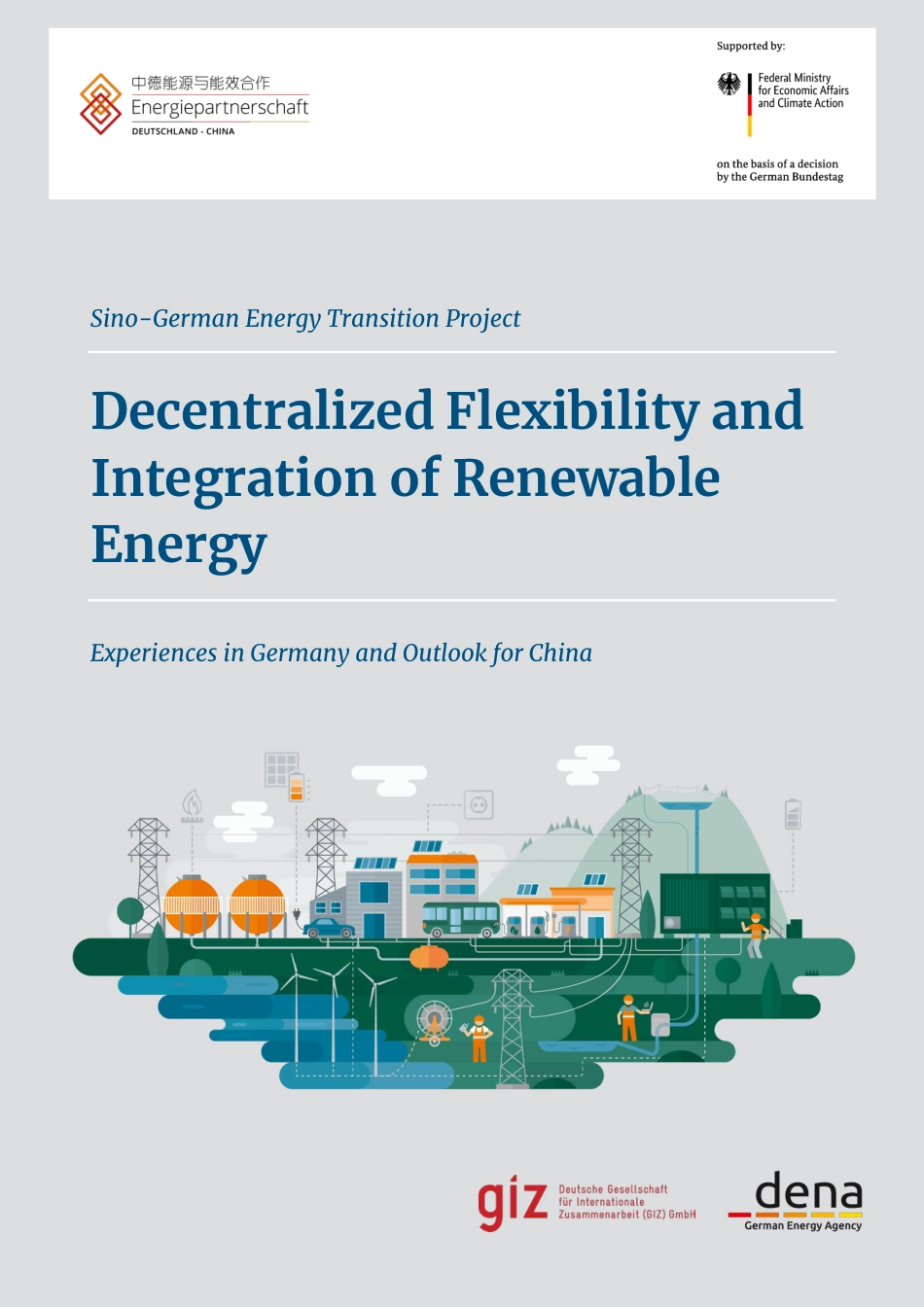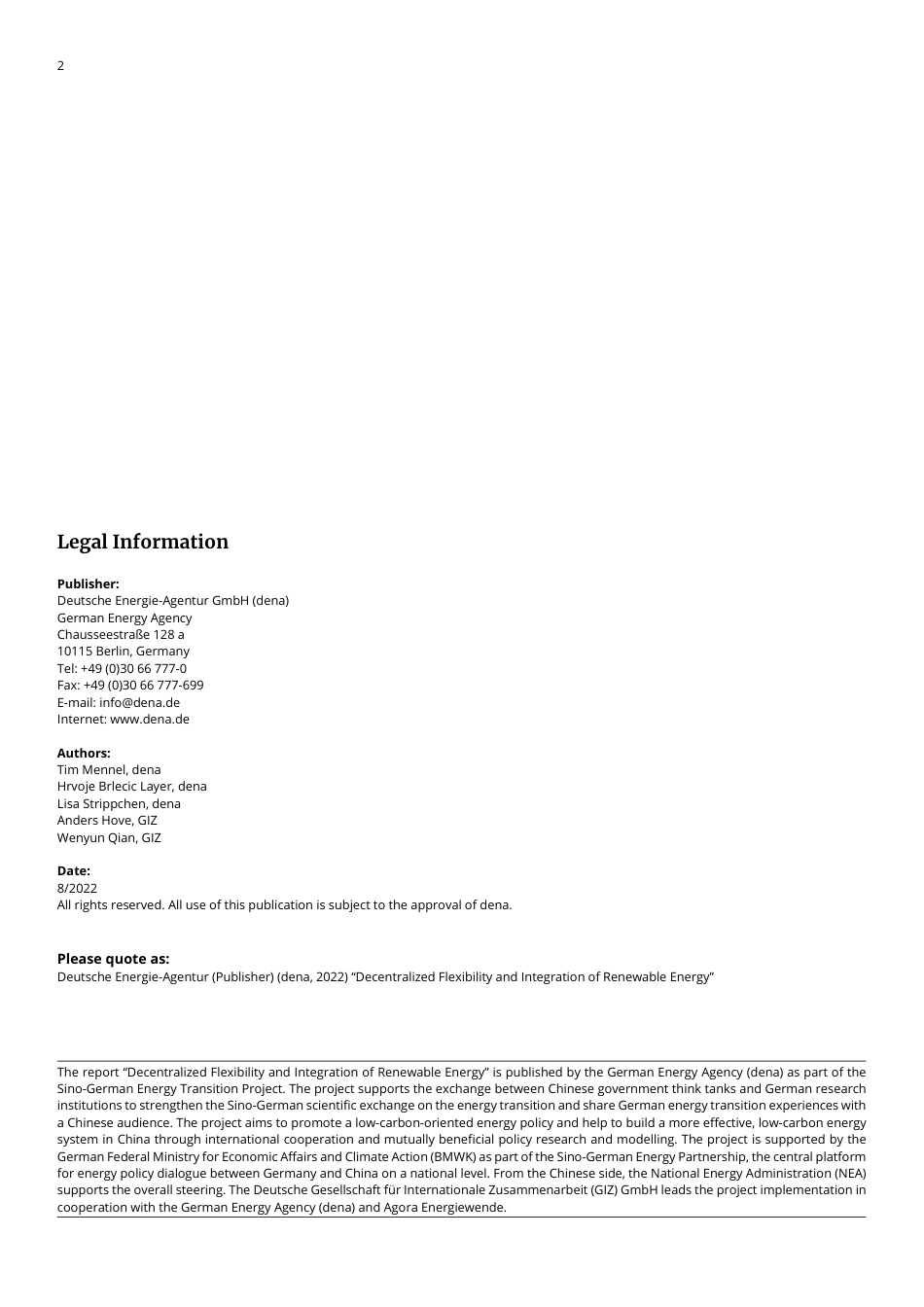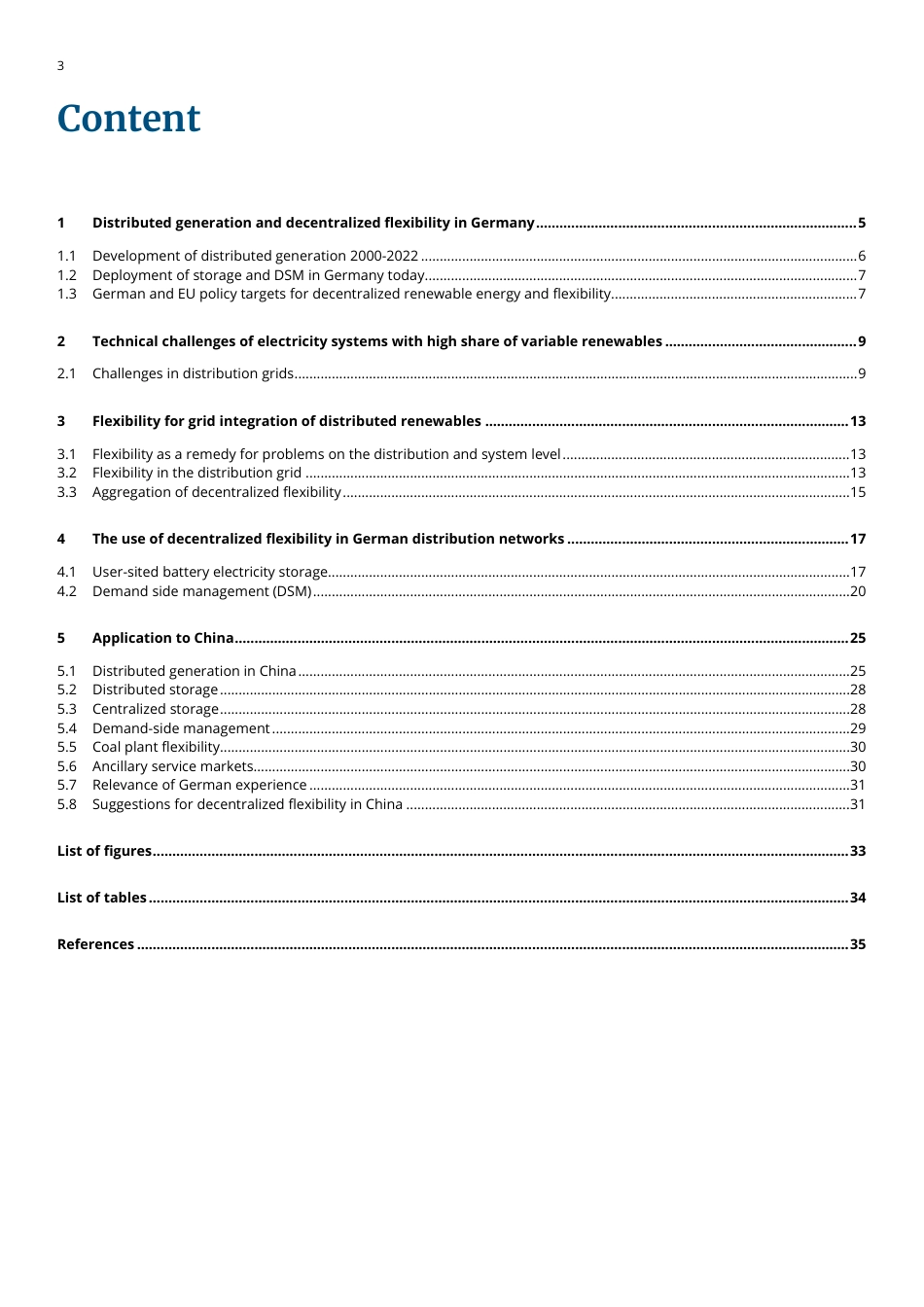Sino-German Energy Transition Project Decentralized Flexibility and Integration of Renewable Energy Experiences in Germany and Outlook for China 2 Legal Information Publisher: Deutsche Energie-Agentur GmbH (dena) German Energy Agency Chausseestraße 128 a 10115 Berlin, Germany Tel: +49 (0)30 66 777-0 Fax: +49 (0)30 66 777-699 E-mail: info@dena.de Internet: www.dena.de Authors: Tim Mennel, dena Hrvoje Brlecic Layer, dena Lisa Strippchen, dena Anders Hove, GIZ Wenyun Qian, GIZ Date: 8/2022 All rights reserved. All use of this publication is subject to the approval of dena. Please quote as: Deutsche Energie-Agentur (Publisher) (dena, 2022) “Decentralized Flexibility and Integration of Renewable Energy” The report “Decentralized Flexibility and Integration of Renewable Energy” is published by the German Energy Agency (dena) as part of the Sino-German Energy Transition Project. The project supports the exchange between Chinese government think tanks and German research institutions to strengthen the Sino-German scientific exchange on the energy transition and share German energy transition experiences with a Chinese audience. The project aims to promote a low-carbon-oriented energy policy and help to build a more effective, low-carbon energy system in China through international cooperation and mutually beneficial policy research and modelling. The project is supported by the German Federal Ministry for Economic Affairs and Climate Action (BMWK) as part of the Sino-German Energy Partnership, the central platform for energy policy dialogue between Germany and China on a national level. From the Chinese side, the National Energy Administration (NEA) supports the overall steering. The Deutsche Gesellschaft für Internationale Z...



